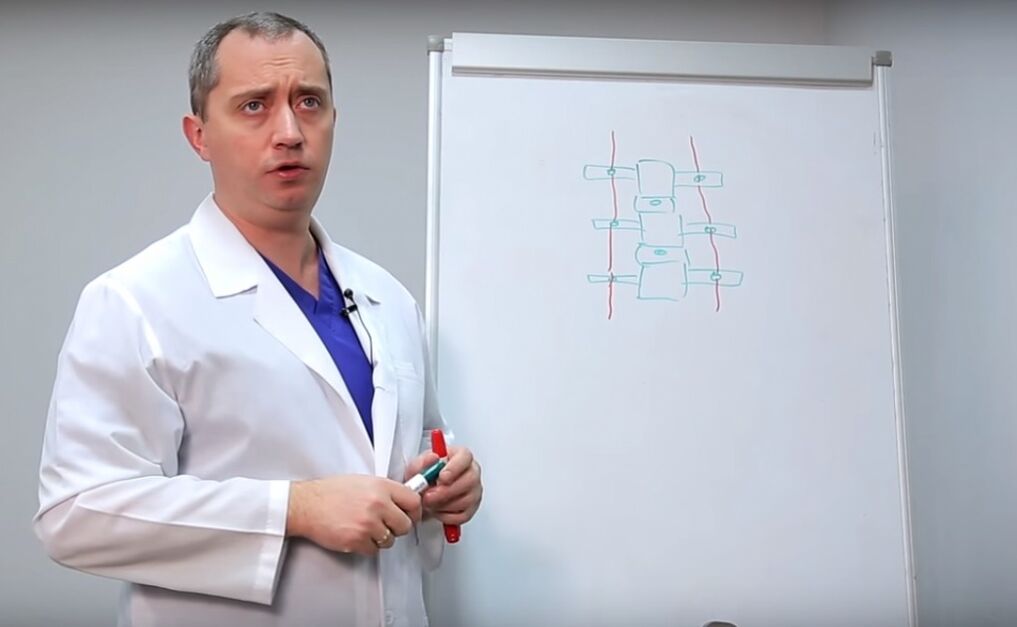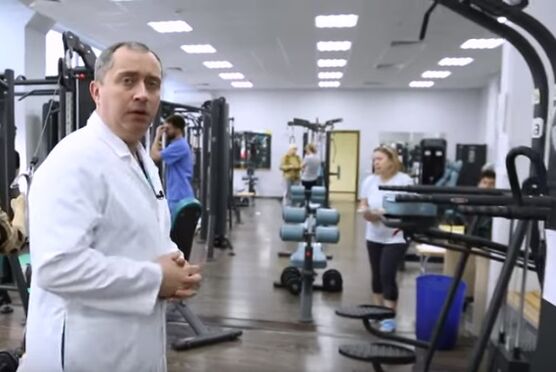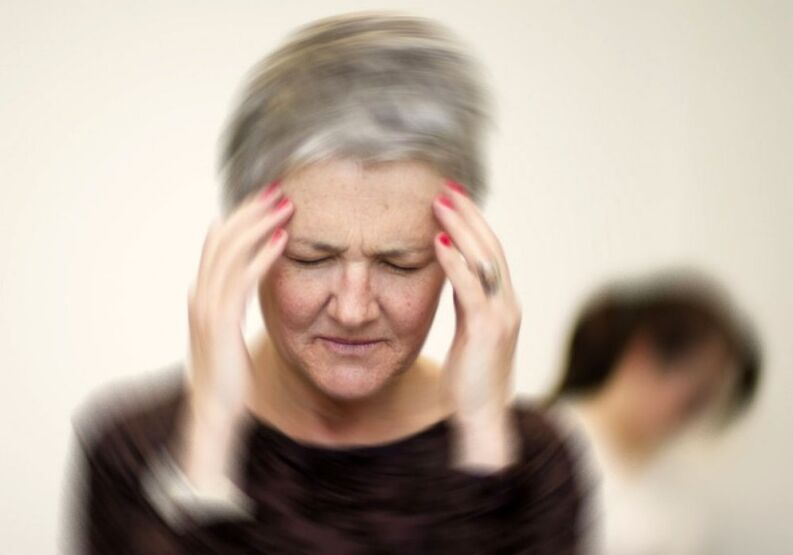Osteochondrosis of the cervical spine is a pathology, which is characterized by the development of destructive-depth processes in the tissues of the articular cartilage.These phenomena develop due to the physiological weakening of the nutrition of the intervertebral discs, which leads to the fact that the cartilage tissue poorly regenerates (restored) even after minor microtrauma of the spine.
Most patients, especially leading inactive lifestyle, constantly load the muscle corset of the neck, as they are forced to stay in the same pose for a long time.All these factors contribute to the development of the disease.
Attention.Cervical osteochondrosis is one of the most dangerous diseases for health and even human life.This is due to the fact that a huge number of vital vessels are concentrated in the neck.
A little anatomy
In the structure of all vertebrae of the lumbar, thoracic and cervical parts there are transverse processes.
In the thoracic region, the ribs are attached to the transverse processes.The bodies of the vertebrae of the lumbar segment are the largest, since this department has a significant mass.The deep muscles of the lower back are attached to the transverse processes of the vertebrae of the lumbar.Between the vertebrae are elastic cartilage (discs).

Features of the structure
The cervical spine is characterized by some anatomical features.Specialists focus the attention of the audience that only in the transverse processes of 1-6 cervical vertebrae there are holes through which the vessels that feed the basal section of the brain (brain stem) pass.
The basal department of the brain can be considered as a “computer center”, in which the data is collected and analyzed from the whole organism.The presented organ controls all automatic processes in the body (movement, breathing, temperature, coordination, heartbeat, sweating, etc.).
Council from the doctor.If you have diagnosed cervical osteochondrosis and the attending physician tells you that this is nonsense and this pathology can be cured with ointments and some lotions, then it is better to run from such a doctor as far as possible.
Pathogenesis of osteochondrosis
With cervical osteochondrosis, the vertebrae of the vertebrae is observed relative to each other, which leads to compression of the arteries.Compression of these vessels can provoke an ischemic stroke of the brain.Such phenomena are fixed entirely.
If a person has a small cervical osteochondrosis, but no one treated or treated it incorrectly, with minimal mechanical effects, the vertebrae displacement is observed, blood circulation is disturbed, patients often complain of dizziness and nausea.After a while, the patient loses consciousness.This is often found in people who have injured in an accident.

Clinical signs of the disease
With the development of cervical osteochondrosis, the following symptoms are observed:
- increased sweating;
- Weakening of the muscle frame of the neck;
- Hand numbness;
- increased fatigue;
- loss of consciousness;
- hypertension;
- nausea and dizziness;
- Problems with posture;
- insomnia;
- limited movements;
- unreasonable bad mood;
- chest pain;
- a feeling of running goosebumps in the body;
- When rotating the head, a crunch is heard;
- aches in bones and chills;
- sharp pains in the shoulders and neck;
- violation of coordination;
- Problems with vision and hearing.
Advice!When identifying the above features, you need to contact an experienced specialist - therapist, neuropathologist, vertebrologist, traumatologist, cardiologist or surgeon.After a thorough diagnosis, the doctor will be able to diagnose and choose the optimal tactics of treatment.

Complications
Degenerative-dystrophic processes in the tissues of the spine violate the functional activity of this organ.Simply put, there is a “wear” of the spine:
- limited mobility of the spinal column;
- decrease in the height of the intervertebral discs;
- the formation of a hypothalamic syndrome;
- respiratory arrest due to damage to the spinal cord;
- violation of blood flow in the spinal cord;
- violation of the swallowing reflex;
- dysfunction of internal organs;
- compression of the nerve;
- disk loss;
- violation of breathing;
- spinal deformation;
- vestibular disorders;
- neurocirculatory dystonia;
- shoulder -shoulder periarthrosis;
- thyroid dysfunction;
- epicondalite;
- stenosis of the intervertebral channel;
- The formation of protrusions and intervertebral hernias.

Note!All these complications require immediate help, they relate to dangerous conditions that worsen not only the quality of the patient’s life, but can also cause his death.
The doctor also notes that with osteochondrosis, a brain stroke is sometimes observed.In this case, the brain is affected and actually all regulation of the body's work is disturbed.In the holes of the transverse processes of the vertebrae, not only vessels, but also nerves pass.When the vertebrae is displaced, they are also pinched.Because of this, muscle weakness of the hands is observed, complete or partial of their paralysis.
Very often, patients turn to traumatologists, as they have a shoulder, take pictures, undergo a course of physiotherapy (massage, electrotherapy, etc.), and the pain syndrome is not eliminated.
When contacting a specialized clinic, the institution’s specialists first perform a comprehensive examination and only then, on the basis of the results, appropriate treatment is prescribed.With a slight squeezing of blood vessels, blood flow in the brain is disturbed, which provokes the development of arterial hypertension.In 95% of cases, hypertension develops due to compression of blood vessels with osteochondrosis.

Doctors developed special exercises that are aimed at decompression of blood vessels and nerves, the restoration of the functions of the muscular-ligamentous apparatus of the neck.
If the patient is diagnosed with cervical osteochondrosis, then it is recommended to do at least three examinations:
- Radiography.With its help, information about the condition of the cervical spine segment is obtained.Pictures should be carried out in 2 projections and planes.Also, this method allows you to establish the mobility of damaged vertebrae, the displacement of their bodies, the presence of salt deposits and the appearance of neoplasms.
- Doplerography, or dopplerometry.Allows you to evaluate the patency of blood vessels using a blood flow schedule.During the procedure, the patient is installed special sensors in places of the alleged localization of the patronage.
- MRI of the cervical spine.This is perhaps the most informative, painless and accurate diagnostic method.Using this method, not only the presence of the disease is revealed, but also the degree of its severity.
Conclusion
Osteochondrosis is a very insidious and dangerous disease.It is extremely difficult to diagnose this pathology in the early stages of pathogenesis, since it passes almost asymptomatic.With the progression of the disease, many signs are confusing, since problems with blood flow can cause suspicions of disorders in the field of heart.Therefore, doctors recommend, with the slightest manifestations of pain in the cervical spine, immediately contact specialists.This will allow you to get rid of problems in the early stages and prevent the development of various kinds of complications.













































